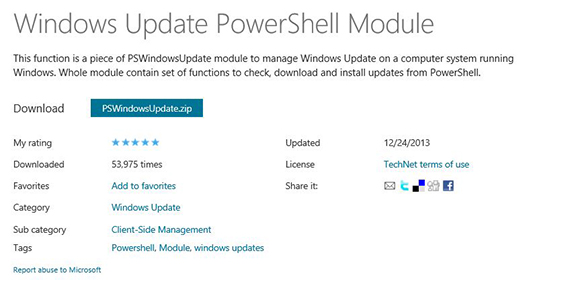Perform 7 Essential IT Management Tasks with PowerShell
- Blog
- PowerShell
- Post
Windows PowerShell is an impressive scripting language which easily lends itself to writing single commands that can accomplish various tasks efficiently. Although PowerShell can be used across several different Microsoft platforms, you don’t need to feel overwhelmed by the abundance of choices that are available within the scripting language.
With this in mind, this comprehensive list of task-oriented commands from Petri IT Knowledgebase experts including; Jeffery Hicks, Flash Denning, John O’Neill Sr., and Pat Richard will make your IT work easier.
1. Getting Mailbox Sizes in PowerShell
With the Get-MailboxStatistics cmdlet, you can easily see information about your mailbox account’s display name, item count, and total item size. You can also configure the command to retrieve your mailbox size along with information about all users hosted in Exchange. Alternately, you can also determine an Office 365 mailbox size with PowerShell.
2. Changing a User Password with PowerShell
It is easy to reset user passwords using PowerShell. In Flash Denning’s article on password management, you’ll learn how to reset all local user accounts to one designated password.
3. Generating a Microsoft Word Document with PowerShell
Who knew that you could use PowerShell to create and format Microsoft Word documents? Text can easily be inserted into the document with the TypeText() and TypeParagraph() methods. On a similar tangent, you can also create custom reports in Excel with PowerShell.
4. Creating and Managing Local Accounts with PowerShell
With PowerShell, it’s simple to create and setup local user accounts remotely. PowerShell also makes it possible to manage local user accounts in several different ways, such as changing the password or group membership. You can also disable or delete the account with a few lines of PowerShell code.
5. Manage Windows Updates with PowerShell
The PSWindowsUpdate module is an easy way to manage Windows update. Although you can use the Deployment Image Servicing and Management tool (DISM), John O’Neill Sr. walks through a much more elegant solution that takes out the unneeded complexity for creating a deployment image.
The Windows Update PowerShell Module can be used to manage your Windows updates. (Photo: Petri IT Knowledgebase)
6. Grabbing a Remote Computer’s Serial Number with PowerShell
PowerShell can be advantageous for grabbing a serial number from a remote computer. This is easily done by running Windows Management Instrumentation (WMI) queries, which lets you perform tasks on local or remote computers.
7. Managing Scheduled Tasks with PowerShell
One of the great features in Windows 8 and Windows Server 2012 is the ability to create and manage scheduled tasks with PowerShell. This is particularly useful because now we don’t have to rely on the traditional schtask.exe to make changes to scheduled tasks. The scripting language also makes it easy to modify or launch scheduled tasks, as well as the ability to enable or disable a scheduled task.
Which PowerShell commands do you use to get tasks done?
Drop the author an email or touch base with her or the Petri IT Knowledgebase on Twitter, Google+, or Facebook:
- Follow Blair Greenwood on Twitter and Google+
- Follow Petri IT Knowledgebase on Twitter (@petri_co_il)
- Follow us on Facebook and Google+



